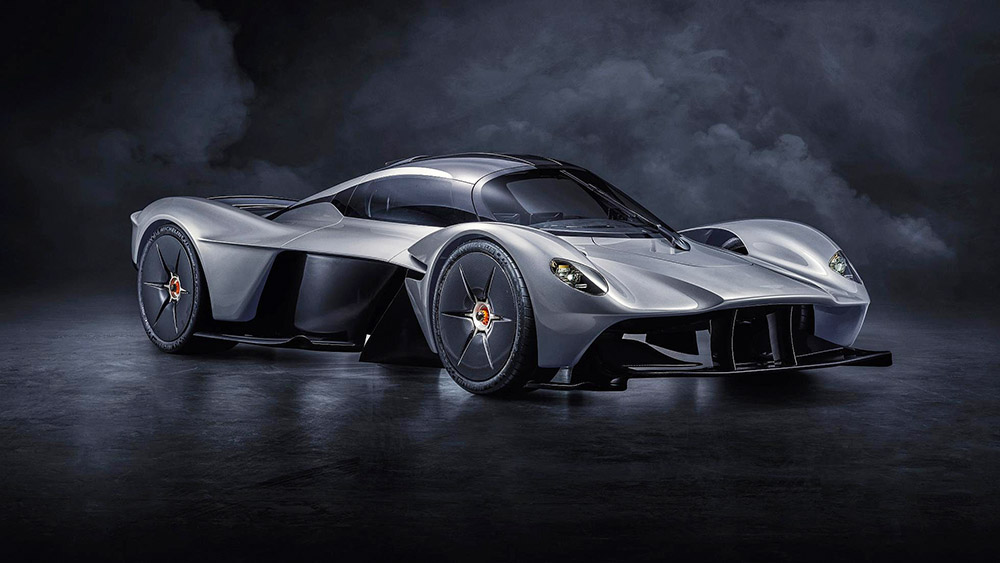
I’m standing shoeless in the middle of Aston Martin’s design studio, peering through a porthole into a dark capsule. Surrounding me is the senior design team – boss Marek Reichmann over my left shoulder – all are silent, fixated on how I’m planning to contort myself into the driver’s seat. I consider a head-first Klinsmann dive, then bum-first, leaning back and hoping for the best. In the end I lead with the feet, standing on the measly padding and clinging to whatever carbon extremities I can while lowering myself into a position I last experienced during a root canal – feet above my hips, heavily reclined, mouth agog. The Valkyrie isn’t a road car jacked up on F1 power figures, it’s an F1 car with its edges chamfered for the road.
But then what would you expect from a project born of one of the great F1 minds, a titan of the sport, a man with a freakish understanding of how to make fast things go faster? I’m in his office now at Red Bull Racing HQ. A wall of glass bathes his desk and vast drafting board in sunlight, a stack of hand-drawn sections and calculations sits casually on the side. I sense I’m about to be schooled, drowned in engineering complexity and shown to be the charlatan I am, but Adrian Newey – dressed down in a checked shirt and jeans – isn’t interested in any of that. He pours a glass of water and asks if he can tell me a story.
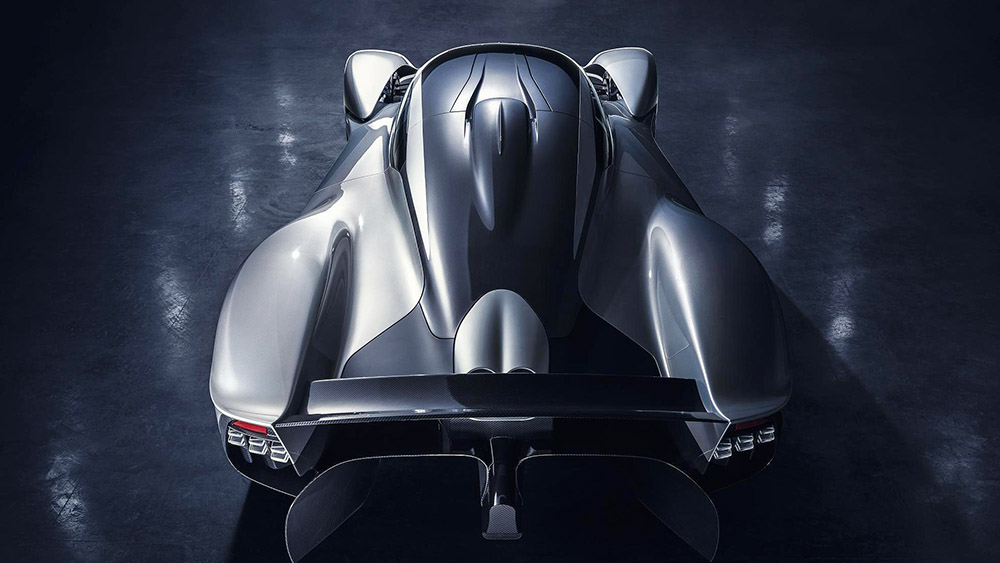
“The whole thing came about in 2014. I felt as if I needed a new challenge beyond Formula One, and something I’d always wanted to do, from when I was a child, was to design a road car. In the process of renewing my contract at Red Bull, I spoke to Dietrich Mateschitz, our Austrian owner, and Christian Horner about the idea and in the August break I started sketching out some ideas. I sat back and thought, OK, clean sheet of paper, what would we like to produce?”
What Newey homed in on was something that was “tractable” on the road.
“If it’s simply a racing car on the road and feels as such, I’d view that as a failure.”
It also needed to be capable of extreme performance, therefore small and light (he calls the McLaren P1, LaFerrari and Porsche 918 “big, clumsy and heavy”) and intimidating, like the very fastest superbikes. It also needed to be, in his words, “a piece of art.” He tells me about one customer, an American lady, who’s designing her entire house with the Valkyrie as its centrepiece.
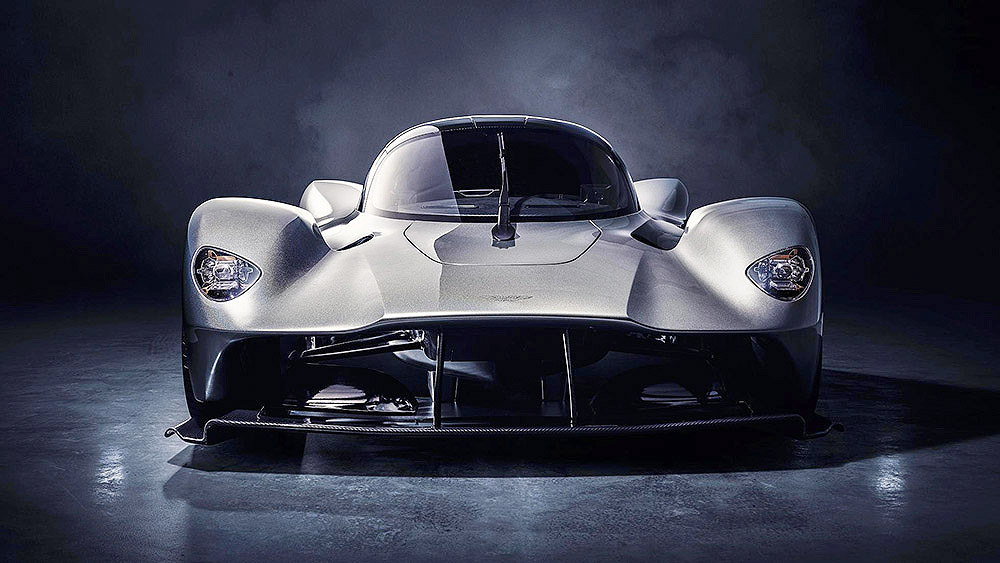
Then, in the winter of 2014/2015, Newey started spending a lot more time in his garage. “I started, almost as a weekend hobby, developing drawings from those basic principles – coming up with the spec sheet, if you like.” Around this time he assembled a small team of trusted Red Bull F1 colleagues to turn his drawings into a computer model and start working on the trickier technical aspects, such as the active suspension and bespoke single-clutch gearbox.
This takes us to autumn 2015. Newey now had an early-stage research car with a broad mechanical package including cabin dimensions and where the “big bits” would go. “We had a package that looked as if it worked and we had a rough weight estimate of around 1,000kg,” he explains. “The big decision then was do we find a private investor or do we go with an OEM? If you think about the OEMs we could partner with, with the right image, Aston was clearly the one. We already knew Andy Palmer from his Nissan/Infiniti days, so it was fate.”
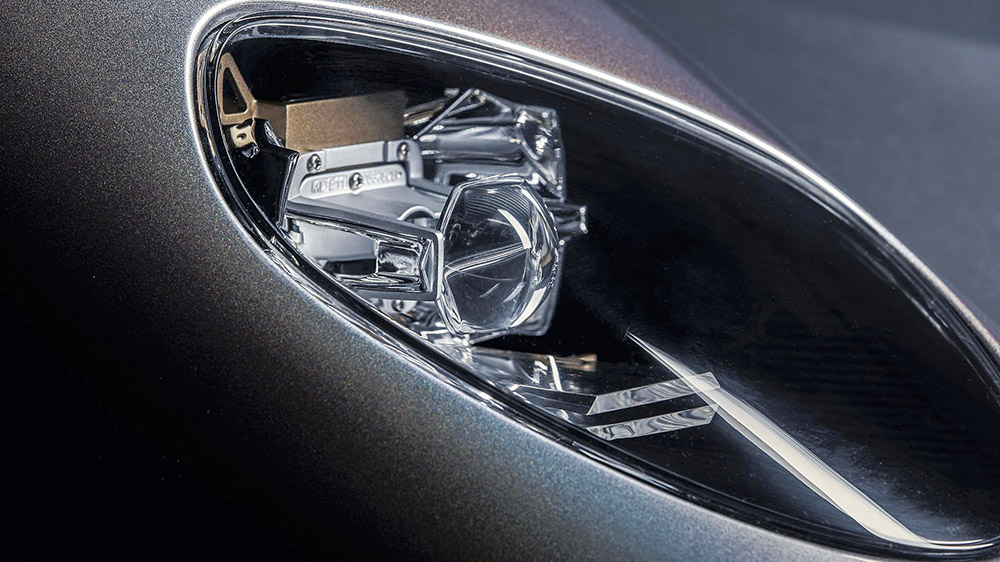
As it turns out, Aston had already been working on a hypercar of their own, and had a quarter-scale model in the studio. “Their car was quite a lot bigger, let’s say LaFerrari-sized, ours was narrower and lower. Our car, from a looks point of view, effectively had a lineage with the Red Bull X1,” Newey tells us. And it was Newey’s proposal that progressed. Aston “did a styling job on it” keeping all Newey’s aerodynamic surfaces below the waistline, his canopy shape, but restyled the painted bits. “If you look at the first styling model we showed – the green bits were Aston, the rest was ours. It was rather thrown together to amalgamate our ideas and theirs, and then we started developing from there.” It was given the codename Nebula – an abbreviation of Newey, Red Bull and Aston – but it didn’t stick, because “Aston like their ‘V’ names”.
Newey describes how there were a few “points of contention,” aka big fat arguments, with Aston along the way. “They didn’t believe two people could comfortably sit side by side in it, so they went away and made a seating buck and were completely shocked that you could.” As he wanted to keep the front bulkhead as narrow as possible for aero, Newey’s solution was to angle the occupants inwards by 5º – there were mumblings from within Aston that this would be disorientating. Newey fired up the simulator and proved it wasn’t the case.
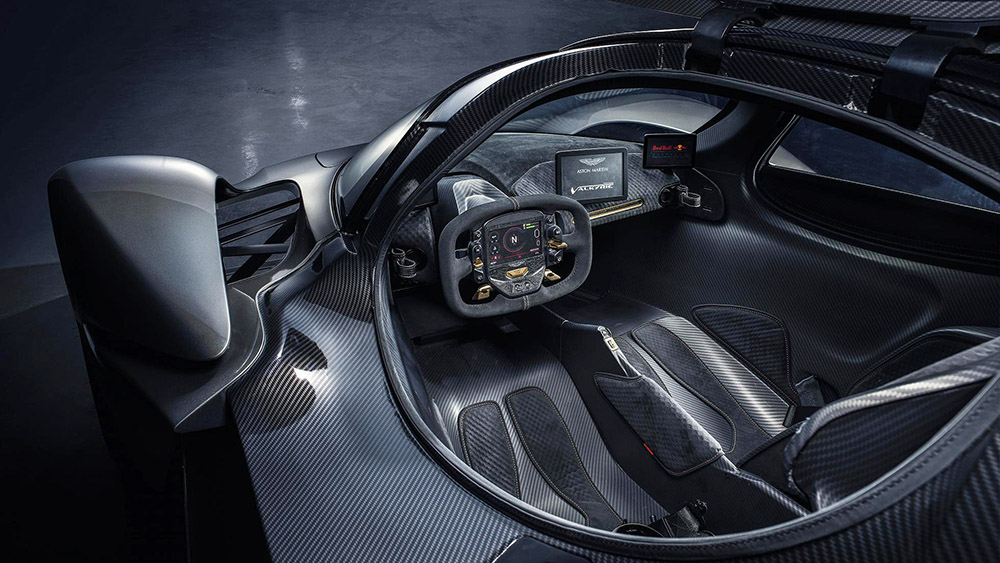
Another sticking point was the powertrain. There were only ever two contenders for Newey: a V6 twin-turbo and a naturally aspirated V12. “I did some homework and came to the conclusion that weight wise there’s wasn’t much between them, in terms of cooling requirements the V6 was worse, in terms of sound the V6 was worse and it would vibrate too much if you solid-mounted it to the chassis. Technically and emotionally the V12 was the better solution.
“Some at Aston liked the idea of a V12, but wanted to use a derivative of the One-77 engine, but it wouldn’t produce the power we needed. The other group said it should be a V6 twin-turbo. It almost broke the deal, because we said we wouldn’t do it unless it was a bespoke V12, made by Cosworth.”
There is no spec sheet, yet. In fact, there is no running prototype, yet – that will be built early next year, with first customers taking delivery in early 2019, but the performance targets and systems they’ll use to hit them, are unusually well defined. By piecing together conversations with Newey, Reichmann and CEO Andy Palmer, here’s what we know – one mouthwatering engineering subdivision at a time. We’ll start with aerodynamics because, well… have you seen the thing?
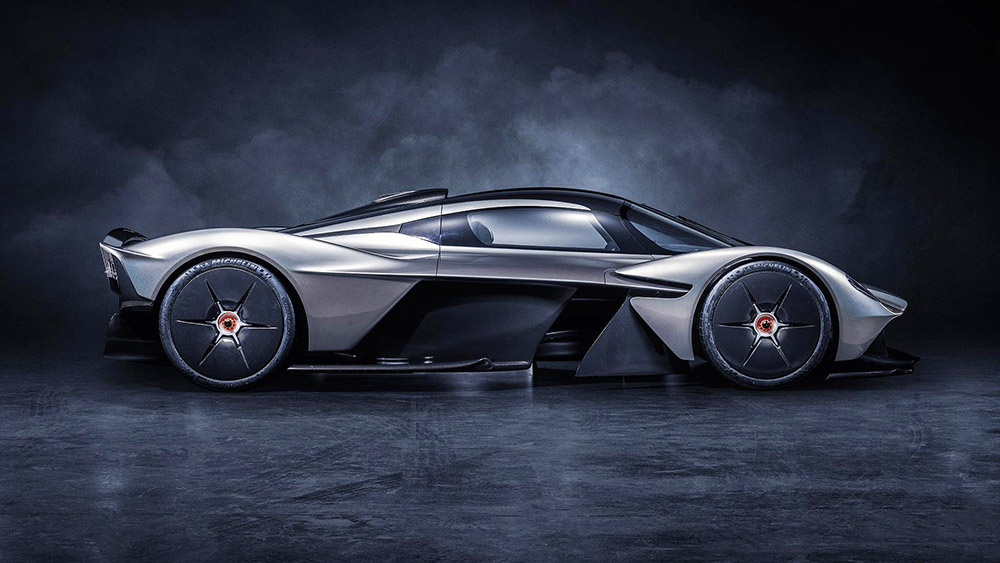
At the front an active wing is suspended low beneath the flat nose section. Its efficiency is governed by holes cut into the bodywork inboard of the front wheels to release the pressure, holes that weren’t there on the first Valkyrie model, holes that also reveal the gorgeous wishbones beneath. F1-style brake cooling ducts sit on the inside of the wheel, while the wheels themselves won’t be flat Chris Boardman-esque discs as per this model. “We need to get air from the internal brake air duct to the outside, so there has to be porosity in the wheel design somewhere to let that air out,” says Newey.
The roof, originally punctured with a NACA duct, is now home to a scoop that scoffs air into the engine. Most would stop there, but Newey was troubled by the ‘spill’ (air that leaks out the scoop when you lift off the throttle). Carefully shaped channels, either side of a dorsal fin, ensure spill is sent smoothly on its way – making it more useful when it arrives at the wing. You’ll also notice the Valkyrie’s rather unique CHMSL – rather than a metre wide LED bar, the ‘centre high mount stop lamp’ is in fact a single piercing LED on the point of the fin.
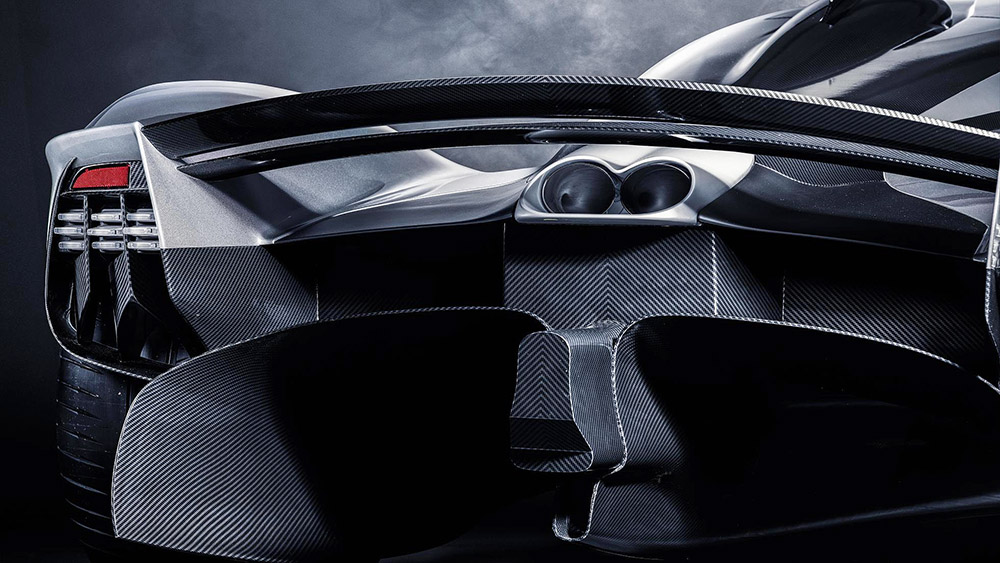
Round the back, a two-part active rear wing hovers dangerously close to the exhaust exit – an area than can reach up to 800º C. Oh yes, and then there’s a diffuser inspired by Crossrail. And making this all possible is an active suspension system that reacts to the lateral g-loading with the aim of keeping the car perfectly level to let the aero do its thing. Body roll will not be in the Valkyrie’s vernacular.
There are still secrets buried in the powertrain, such as where the rev limit will fall and what the magic bhp figure will be, but we can have a good stab. The 6.5-litre V12 is a new design loosely derived from the CA2010 18,000rpm 2.4-litre V8 used by Williams in their 2010 F1 car, and currently on the test bench at Cosworth. It will be “high-revving” and immensely powerful. How powerful? Well, Newey’s original weight target for the car was 1,000kg; he admits they’ve slipped over that a bit but will still “comfortably eclipse” a one-to-one power-to-weight ratio. So a total system output, V12 and e-motor combined, that’s easily north of 1,000bhp.
The electric motor itself is fed by a flat lithium-ion stack, fitted low and centrally under the fuel tank. And the motor isn’t just there to torque fill at low revs or to augment straight-line performance, it’s there, in Newey’s words, to give the car a “milkfloat feeling” in traffic – expect a small EV-only range. Rumour is it’ll act as a reverse gear, too, saving weight and space in the gearbox – a Newey-designed, Ricardo-engineered, single-clutch unit driving the rear wheels. It had to be bespoke for this car not just to meet the performance demands, but leave enough space for those monster venturi tunnels.
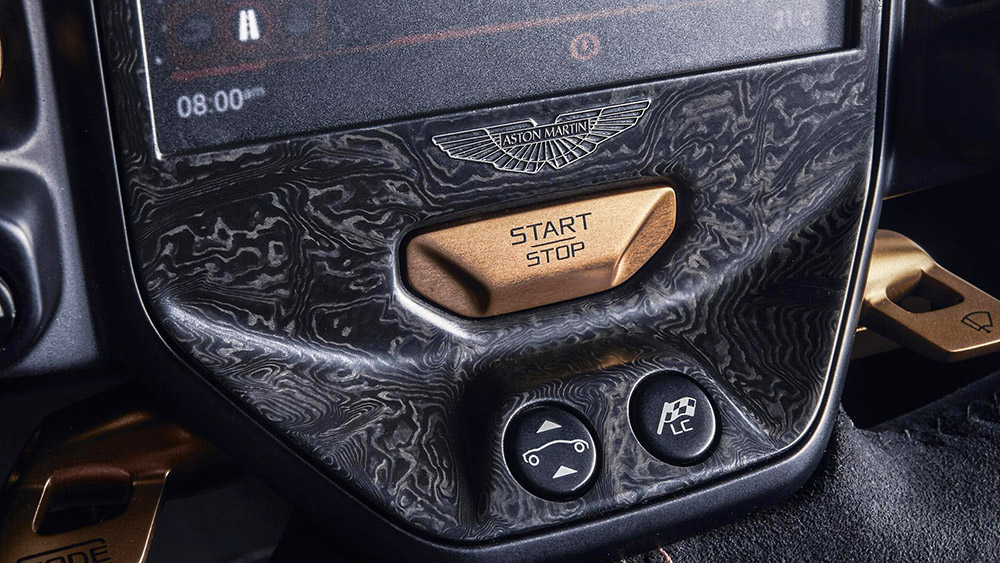
As for the sound it will make when it first clears its lungs… shrieky should cover it. Newey insisted that it had to be a twelve-into-one exhaust system, rather than two six-into-ones because “that makes it sound like it’s revving twice as high as it actually is.” Remember when F1 cars used to sound good? Yeah, that.
Ah yes, lest we forget, this is still a road car and therefore has road car jobs to do. The wiper blade sticks out immediately, although Newey is convinced owners will just unscrew it the moment they get it home. Placing a number plate is also particularly tricky – suspended somewhere below the exhaust tips appears to be the consensus for now – and the badge is now laser-cut and just 0.07mm thick, so it weighs 99.4 per cent less than Aston’s normal badge.
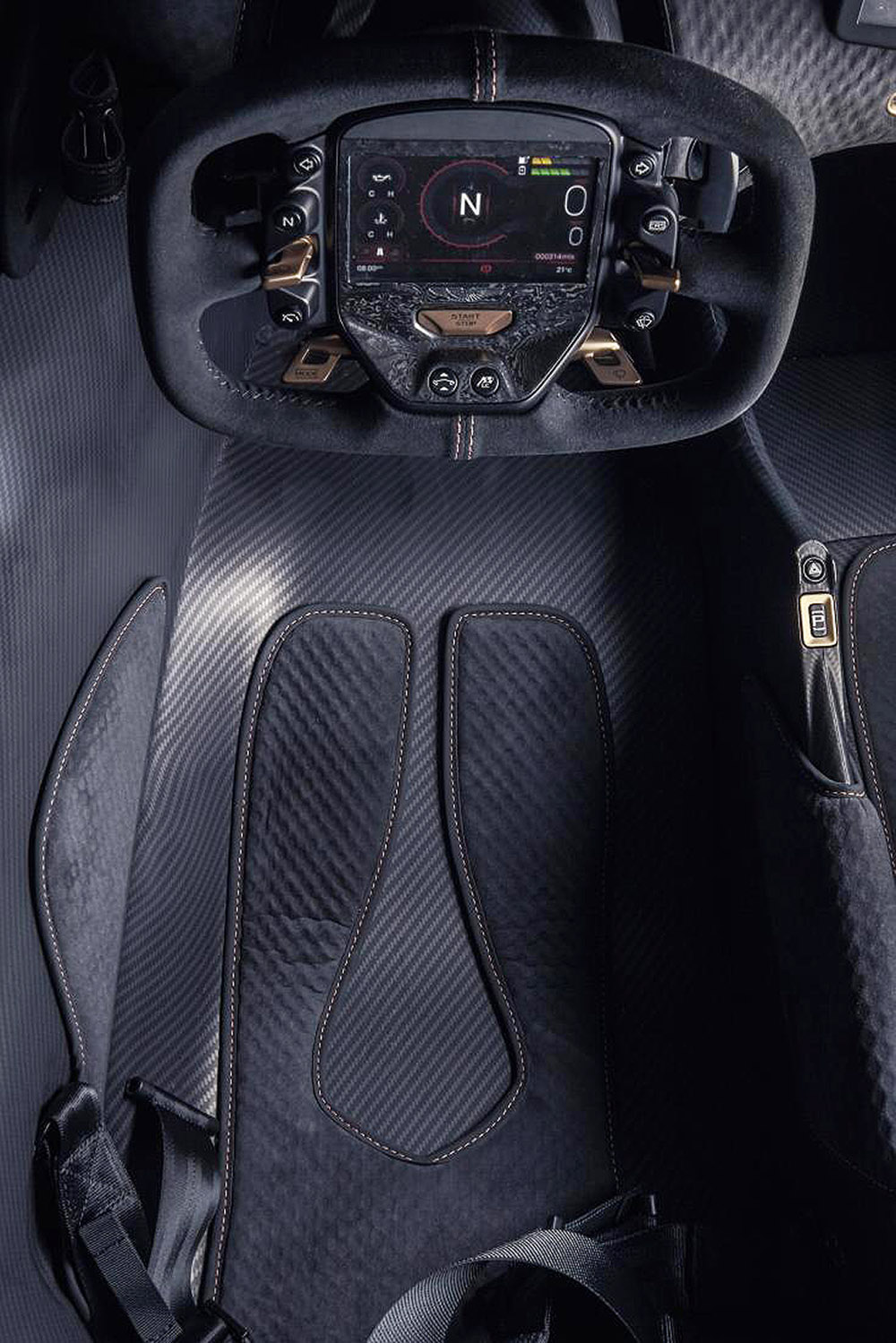
Newey admits that climbing into the passenger compartment won’t be glamorous for anyone in a miniskirt, but the size of the aperture was unavoidable “because it’s quite a narrow chassis and there’s no room for pontoons, so it needs to be a high-sided.” The gullwing doors were necessary so the driver and passenger can pull their feet back and stand straight up when they’re getting out. As you’d expect, the interior itself is ruthlessly efficient, but relatively comfortable once you’re in. In front of you is an F1-style wheel riddled with buttons, a central touchscreen, and two other screens either side – your in-board, camera-fed wing mirrors. The cameras themselves are hidden out of the air stream in the side gills behind the front wheels – taking advantage of new legislation allowing digital wing mirrors pushed through by the VW XL1. There are two seating options – padding stuck directly to the sculpted tub for taller customers, such as the 6ft 3in Reichmann, or a removable padded carbon-fibre shell a few inches proud of the tub for the vertically challenged, like me. As in the Ford GT, you can adjust the wheel for reach and rake and move the pedal box, and that’s your lot.
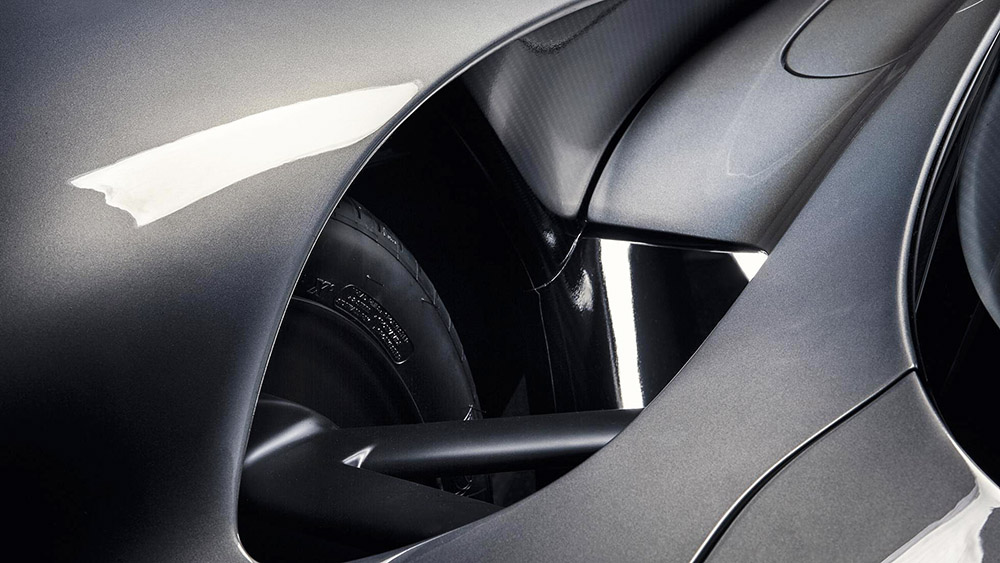
Performance? I wouldn’t dare to guess, but I ask Newey to position it for me versus the P1, LaFerrari and 918. “We’ve done lap time simulations and it’ll be significantly quicker around a lap than any of those.” He also dismisses an assault on the ’Ring record: “It’s a dangerous place in a Mini, let alone a Valkyrie. If a customer wants to take their car and get the lap record, that’s up to them.” He hints that setting a time around a modern F1 circuit like Silverstone holds more appeal.
It’s clear Newey doesn’t care about so-called rivals, how the project is perceived or how convention dictates he should demonstrate its extraordinary attributes. He’s not interested in benchmarking or scoring points – it’s about staying true to his vision and making this the fastest and most satisfying road car he possibly can. He’s unflappable, in other words, but perhaps my final question can unstick him.
Like Gordon Murray and the McLaren F1 before him (Newey owns an F1 GTR), this is Adrian Newey’s road car, it could make or break his name. Does he feel the weight of expectation? “Maybe a little bit, I’m human so I want my first attempt at a road car to be looked upon fondly. If it’s a flop then I’ll feel I’ve failed myself and potentially damaged my name, but it’s not something I spend a lot of time worrying about. Aston talked about benchmarking other cars, but we haven’t bothered really – we want to do it our way.”
- Jack Rix
